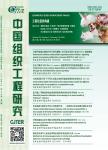Design and application of biodegradable coronary stents: what will be brought by further innovations in materials science?
Design and application of biodegradable coronary stents: what will be brought by further innovations in materials science?作者机构:Department of Cardiology Zhongshan Hospital Shanghai Institute of Cardiovascular Diseases Fudan University Shanghai 200032 China
出 版 物:《中国组织工程研究》 (Chinese Journal of Tissue Engineering Research)
年 卷 期:2014年第18卷第30期
页 面:4878-4888页
学科分类:1002[医学-临床医学] 100201[医学-内科学(含:心血管病、血液病、呼吸系病、消化系病、内分泌与代谢病、肾病、风湿病、传染病)] 10[医学]
基 金:the National Natural Science Foundation of China, No. 81370323 the Research Project of the Science and Technology Commission of Shanghai Municipality, No. 12DZ1940604
摘 要:BACKGROUND: With the social and economic development and aging, coronary heart disease has become the primary cause of death endangering human life and health, while cardiovascular intervention (especially stenting) in the treatment of cardiovascular disease is at a growing status. OBJECTIVE: To describe the development, research progress and latest clinical application of heart interventional materials as well as advantages and disadvantages of biodegradable stents, and meanwhile to prospect for its future development and improvement. METHODS: A computer-based online search was conducted in PubMed for English language publications from January 1999 to April 2014 using the key words of stent, scaffold, bioabsorbable, bioresorbable, biodegradable, biocompatibility, material properties in English. RESULTS AND CONCLUSION: The new fully biodegradable stents are considered as another major progress in the cardiac intervention, which brings a new gospel for patients with coronary heart disease. In the initial stage of implantation, biodegradable stents exhibit the same mechanical support as bare metal stents; after implantation, anti-proliferative drugs are released to prevent thrombosis and restenosis, and the stent is completely degraded within a specified period, which significantly reduces the late-stage and very late-stage thrombosis and the risk of in-stent restenosis. However, long-term safety and efficacy of biodegradable stents need further studies. Innovation of stent design and materials science is the key to overcome the current shortcomings of biodegradable stents.



